Stoicism is a philosophical school that emerged in Ancient Greece, with teachings centered on fidelity to knowledge and control of emotions. You symbols of stoicism They are visual representations that help in understanding the principles and values of this philosophy. In this definitive guide, we will explore the main symbols of stoicism and its deep meaning.
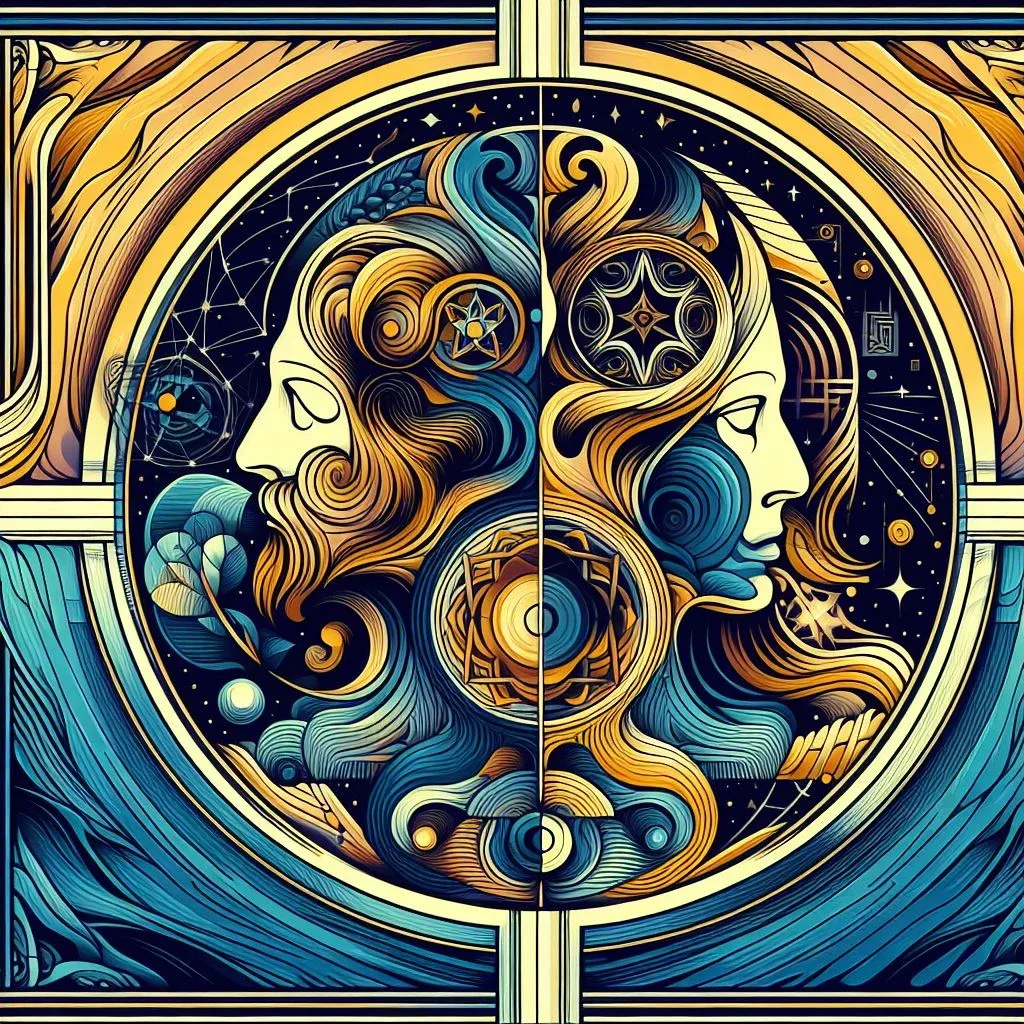
Main points:
- Os symbols of stoicism represent essential aspects of this philosophy, such as serenity, wisdom and balance.
- Symbols of Stoicism have a long history and are widely used in art and culture.
- The lotus flower, the anchor, the caduceus, the owl, the labyrinth, the sun and the ship are some of the best-known symbols of Stoicism.
- Each symbol has a deep meaning, related to the fundamental principles and values of Stoicism.
- Understanding the symbols of Stoicism can help you apply its teachings in everyday life, seeking to live in accordance with nature and cultivating inner serenity.
The Lotus Flower
The lotus flower is one of the main symbols of stoicism. At stoic philosophy, the lotus flower represents the ability to bloom and grow even in adverse conditions. Just as the lotus flower is born in the mud and rises above the water to bloom, the Stoics believe that human beings must seek wisdom and personal growth even in the face of challenges and difficulties.

This beautiful flower symbolizes resilience and the ability to find beauty and serenity even in the midst of adversity. It represents the inner strength that allows us to face life's difficulties with courage and determination.
The lotus flower in Stoicism reminds us that, just like nature, we are capable of adapting and overcoming the most challenging circumstances. She invites us to look beyond appearances and find meaning and purpose in everything we do. By connecting with the lotus flower, we can find inspiration to seek wisdom, serenity and personal growth on life's journey.

| Main meanings of the lotus flower in Stoicism: |
|---|
| Resilience and ability to flourish in the midst of adversity |
| Inner strength and determination |
| Finding meaning and purpose in everything we do |
| Search for wisdom and personal growth |

The lotus flower is a powerful symbol in stoicism, reminding us of our ability to flourish and find serenity even in the most difficult times. By understanding the deep meaning of this symbol, we can be inspired to live according to Stoic principles and seek true happiness and personal fulfillment.
The Anchor
Na stoic philosophy, the anchor is another important symbol that represents stability and the power to anchor the mind in rational and serene thoughts. Just as an anchor holds a ship steady in the midst of a storm, Stoics believe that we must anchor our minds in reason and Stoic virtues to face life's adversities.

This symbol is powerful, as it reminds us of the importance of finding a mental support point to resist the turbulence and uncertainty that we encounter on our path. The anchor invites us to seek inner stability, cultivating serenity and tranquility even in the face of the challenges that life presents us.
“As the sea floods an anchor, so adversity floods the stoic soul – but the stoic soul remains calm.”
The Meaning of Anchor in Stoicism
In Stoicism, the anchor symbolizes the importance of keeping the mind anchored in principles and stoic values, even in the face of the emotional storms and turbulence of life. The objective is to seek inner stability through self-control, mastery of passions and the cultivation of stoic virtues, such as wisdom, courage and justice.

When we anchor our mind in reason and stoic virtues, we are able to face adversity with serenity and find emotional balance even in the most challenging situations. The anchor reminds us that just as a ship remains steadfast even beneath turbulent waves, we too can find stability and inner peace through the cultivation of stoic philosophy in our life.
| Principle | Meaning |
|---|---|
| Stability | The anchor reminds us of the importance of finding a mental support point to resist life's turmoil. |
| Anchor the mind | We must anchor our mind in reason and stoic virtues to face adversity. |
| Emotional balance | The anchor symbolizes the search for emotional balance even in the most challenging situations. |
The Caduceus
The caduceus is a symbol that dates back to Greek mythology and is often associated with stoicism. In Stoic philosophy, the caduceus represents balance and harmony between the mental and emotional faculties. Just as Hermes' caduceus balances the serpents that surround him, the Stoics seek to balance reason and emotions to achieve wisdom and inner serenity.

The caduceus also symbolizes the connection between heaven and earth, between the divine and the human. It represents the integration between the spiritual world and the material world, encouraging Stoics to find harmony between these two dimensions of life. This symbol reminds us of the importance of looking inside ourselves and seeking balance between our mind and our body.

| Meaning of the Caduceus in Stoicism |
|---|
| The caduceus teaches us to seek balance between reason and emotions, avoiding extremes and maintaining inner serenity. |
| He reminds us of the importance of integrating the divine and the human, connecting with our spirituality and living in harmony with the world around us. |
| The caduceus encourages us to seek wisdom and serenity, guiding our actions and thoughts in a conscious and virtuous way. |
By understanding the deep meaning of the caduceus in Stoicism, we can apply these teachings in our daily lives, seeking the balance, serenity and wisdom necessary to face challenges and live in accordance with nature.
Symbols of Stoicism: The Deep Meaning of the Owl
Stoic philosophy is full of symbols that represent the fundamental principles and values of this school of thought. One of the most well-known and significant symbols of Stoicism is the owl. In Stoic philosophy, the owl symbolizes wisdom and a clear vision of reality.
Stoics see the owl as a wise and serene animal, capable of seeing beyond appearances and understanding the true nature of things. Like the owl, Stoics seek wisdom and a deep vision of life to live in accordance with nature and face challenges with serenity.
The owl also represents the ability to observe and reflect. Stoics value the ability to slow down, carefully observe the world around them, and reflect on situations calmly and rationally. This approach promotes a clearer understanding of reality and helps cultivate inner tranquility amidst life's turmoil.

The Meaning of the Owl in Stoicism
In Stoicism, the owl is also seen as a symbol of serenity. Stoics believe that inner serenity is essential to living a virtuous life in accordance with nature. Just as the owl remains calm and serene in all circumstances, Stoics seek to cultivate inner serenity as a way of achieving true happiness and personal fulfillment.
The owl, with its penetrating eyes and calm posture, also represents the ability to discern. Stoics value the ability to distinguish what is in your control from what is not and to make decisions based on reason and wisdom. Just as the owl sees beyond the darkness of the night, Stoics seek to see beyond appearances and make wise and virtuous decisions in their lives.
| Symbol | Meaning |
|---|---|
| Coruja | Wisdom, clear vision, serenity, discernment |
| Lotus flower | Growth and flourishing amid adverse conditions |
| Anchor | Stability, anchor the mind in reason and stoic virtues |
The owl, as a symbol of stoicism, reminds us of the importance of seeking wisdom, cultivating inner serenity and seeing beyond appearances. These teachings inspire us to live a virtuous life, in accordance with nature, and to face challenges with courage and balance.
the labyrinth
The labyrinth is an emblematic symbol in Stoic philosophy, representing the inner journey and the search for self-knowledge. In the Stoics' view, the labyrinth symbolizes the journey towards virtue and wisdom. Just as a labyrinth challenges a person to find the right path, Stoics see life as a journey in which one must overcome challenges and seek moral excellence.
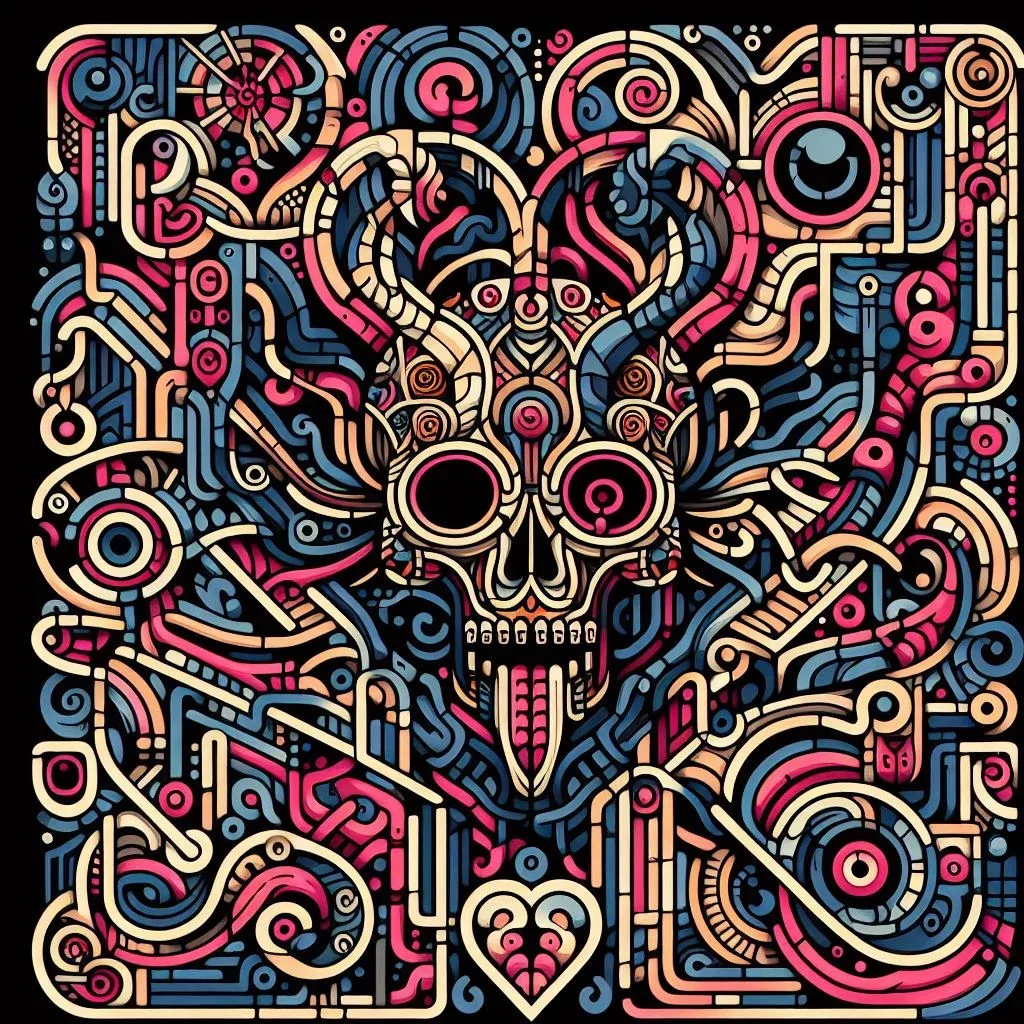
The labyrinth, with its intricate and unpredictable paths, reflects the complexity of human existence. In Stoic philosophy, this symbol reminds us that life is full of choices and obstacles to face. For the Stoics, the quest for virtue is like the quest to escape the maze, where every decision and action must be based on reason and the goal of achieving moral excellence.

Just as a labyrinth requires patience, perseverance and determination to unravel, the Stoic journey requires discipline, self-control and resilience. It is necessary to face challenges and difficulties with courage and serenity, maintaining focus on the search for wisdom and inner harmony.
| Symbol | Meaning |
|---|---|
| Maze | It represents the inner journey, the search for self-knowledge and the journey towards virtue and wisdom. |
The Sun: The Light of Reason and the Transforming Power of Knowledge
The sun is a powerful symbol in Stoicism, representing the light of reason and the transformative power of knowledge. Just as the sun illuminates and warms, Stoics believe that reason and knowledge are essential to illuminate the mind and guide actions in a conscious and virtuous way.
In Stoic philosophy, the search for wisdom is one of the ways to live in accordance with nature and face challenges with serenity. The sun symbolizes this constant search for the light of reason, for a deep understanding of Stoic principles and for the application of these teachings in our everyday lives.

“The sun represents the light of reason and the transformative power of knowledge.”
Just as the sun brings clarity and illuminates darkness, reason allows us to see beyond appearances and understand reality clearly. Stoics believe that the pursuit of knowledge is an ongoing journey and that the light of reason helps us make conscious decisions, find emotional balance, and cultivate virtue in our lives.
The Importance of the Sun in Stoicism
The sun has a profound influence on Stoicism, as it symbolizes the search for wisdom and the practical application of philosophical teachings. Just as sunlight guides us through the day, reason guides us in the pursuit of moral excellence and helps us face challenges with serenity.

By contemplating the sun and reflecting on its meaning in the context of Stoicism, we are reminded of the importance of cultivating reason, seeking knowledge, and living in accordance with nature. Just as the sun illuminates the world and brings warmth, the light of reason allows us to illuminate our mind and warm our actions, guiding us towards a more virtuous and fulfilling life.
| Symbol | Meaning |
|---|---|
| SOL | It represents the light of reason and the transformative power of knowledge. |
The ship
The ship is an important symbol in Stoicism, representing the journey of life and the need to adapt to changes and challenges. In Stoic philosophy, the ship symbolizes the ability to face misfortune and remain steadfast amidst the storms of life. Just as a ship sails the seas, Stoics believe that we need to navigate through adversity and maintain serenity and courage in the face of difficulties.

When we observe a ship in the middle of the ocean, we can see its strength and resistance in the face of waves and winds. This image reminds us that we must remain firm and persevere, even when the path becomes difficult. Stoics value resilience and the ability to move forward, even when life presents unexpected obstacles.
| Symbol | Meaning |
|---|---|
| Ship | Representation of the journey of life and the need to adapt to challenges |
Just as a ship needs a captain to guide its crew, the Stoics defend the importance of having self-control and wisdom as leaders in our lives. We must take control of our emotions and act reasonably, even in times of turbulence.

The ship in Stoicism reminds us that we are responsible for our own journey and that, no matter how stormy the sea may be, we have the power to stay on the right course. With discipline and determination, we can face life's adversities and find serenity and balance even in the midst of the most difficult challenges.

Other Symbols of Stoicism
In addition to the symbols mentioned above, there are other symbols associated with Stoicism that have a deep meaning within this philosophy. These additional symbols complement the understanding of the principles and stoic values, expanding our reflections on life and the search for wisdom.
The turtle
The turtle is a symbol that represents patience and endurance in stoicism. Just as a turtle moves slowly, the Stoics teach that we must learn to be patient in the face of adversity and to resist temptations to act impulsively. The turtle reminds us that the path to virtue requires determination and perseverance.
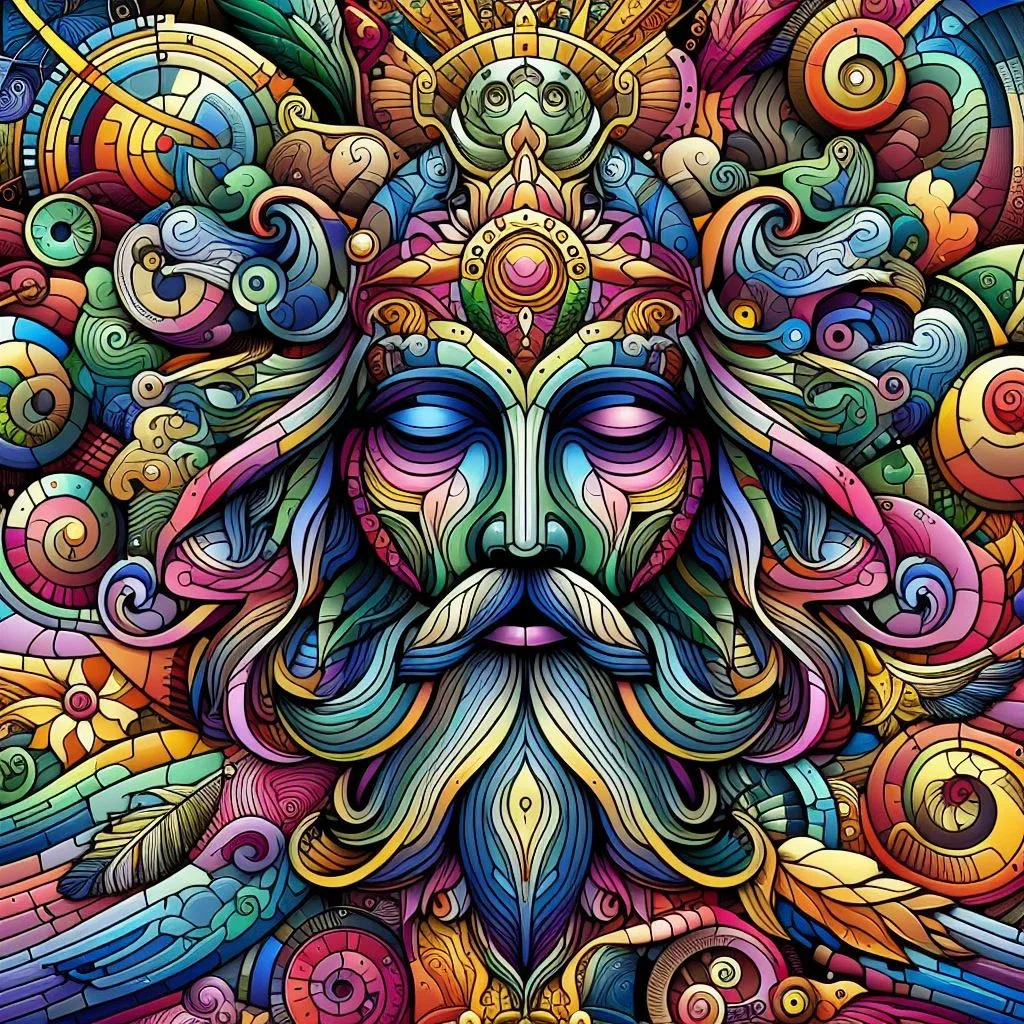
The Oyster
The oyster is another symbol of stoicism, symbolizing the search for inner serenity. Just as an oyster closes to protect its interior, the Stoics teach us to cultivate peace of mind and serenity even in the face of the most challenging situations. The oyster invites us to seek inner tranquility, regardless of external circumstances.

The arch
The bow is a symbol that represents perfection and harmony in Stoicism. Just as a balanced bow hits its target with precision, Stoics seek to achieve a balance between reason and emotions, seeking inner harmony. The arch reminds us that we must cultivate stability and serenity to live in accordance with nature.

| Symbol | Meaning |
|---|---|
| Tartaruga | Patience and endurance |
| Ostra | Search for inner serenity |
| bow | Perfection and harmony |
These other symbols of Stoicism are powerful visual representations of the principles and values of this philosophy. Each symbol invites us to reflect on essential aspects of life and to seek wisdom, serenity and moral excellence. By incorporating these symbols into our personal journey, we can move towards a more virtuous and fulfilling life.
Stoic Values in Practice
The symbols of Stoicism reflect the values and principles of this philosophy in practice. Stoics emphasize the importance of living in accordance with nature, accepting the things that cannot be changed and seeking serenity in the face of adversity. You stoic values include virtue, self-control, acceptance, tranquility and wisdom. By practicing these values, Stoics seek to achieve eudaimonia, that is, true happiness and personal fulfillment.
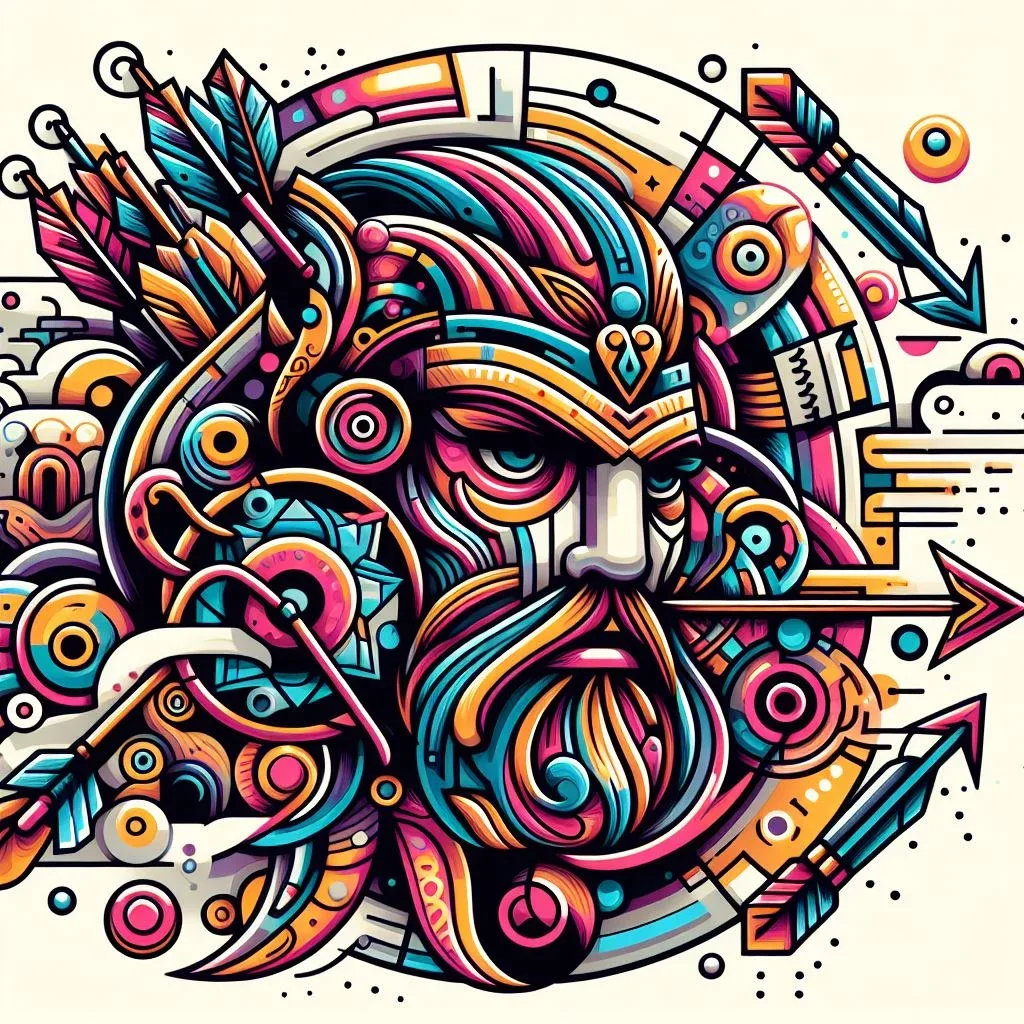
One of the main aspects of practice of stoicism is to live according to nature. This means accepting life's events and circumstances as inevitable and adapting to them. Stoics believe that nature is governed by divine laws and that we must align ourselves with these laws to find harmony and inner peace. When living according to nature, Stoics seek to act in accordance with reason and virtue, always seeking moral excellence.
A practice of stoicism it also involves developing self-control and personal discipline. Stoics believe that we should be masters of our emotions and not be controlled by them. By cultivating self-control, Stoics are able to respond calmly and rationally in the face of adversity, avoiding impulsive and irrational reactions. This personal discipline allows Stoics to deal with life's challenges more effectively and constructively.

Another fundamental aspect of practice of stoicism It is the search for wisdom. Stoics consider wisdom to be the supreme good, the key to achieving true happiness. Seeking wisdom involves reflecting on our own actions and thoughts, questioning our beliefs, and constantly seeking knowledge. Stoics believe that wisdom is an ongoing journey and that we should always be willing to learn and grow.
In short, practicing Stoic values means living in accordance with nature, cultivating virtue, seeking self-control and wisdom. This practice allows us to face life's challenges with serenity and build a life of meaning and personal fulfillment. By applying Stoic values to our everyday lives, we can cultivate a sense of purpose and live more fully and authentically.
The Influence of Stoicism on Art and Culture
Stoicism has had a significant influence on art and culture over the centuries. Many artists incorporated Stoic principles and values into their works, using the symbols of Stoicism as visual representations of these philosophical concepts. The presence of stoicism in art and in culture it serves as a constant reminder of Stoic teachings and the importance of living a virtuous and harmonious life.

O stoicism in art it can be observed in paintings, sculptures and literature from different eras. Artists such as Michelangelo, Rembrandt and Shakespeare, for example, portrayed themes and characters inspired by Stoic values. Serenity, courage in the face of adversity and the search for wisdom are recurring themes in his works.
Furthermore, the symbols of the stoicism in art also play an important role in the visual communication of these philosophical concepts. The visual representation of symbols, such as the lotus flower, the anchor, the owl and the sun, convey powerful messages about the search for wisdom, emotional stability, a clear vision of reality and the transformative power of knowledge.
| Symbol | Meaning |
|---|---|
| Lotus flower | Ability to flourish and grow even in adverse conditions. |
| Anchor | Stability and power to anchor the mind in rational and serene thoughts. |
| Coruja | Wisdom and clear vision of reality. |
| SOL | Light of reason and transformative power of knowledge. |
These symbols and artistic representations inspire and provoke reflections on the values and principles of Stoicism, inviting the viewer to seek a life of virtue, acceptance and serenity. The influence of Stoicism on art and culture is a testament to the timelessness and relevance of these philosophical teachings, which continue to inspire and impact humanity to this day.
Famous People of Stoicism
In Stoicism, several people have gained prominence throughout history for following and spreading the teachings of this philosophy. Two of the best-known figures are Epithet e Marco Aurelio. Epithet was a slave who became one of the main representatives of Stoicism, teaching philosophy to influential people in Rome. His book, “Handbook of Epictetus,” is an influential work that is still studied and appreciated today.

Marcus Aurelius, in turn, was a Roman emperor known for his adherence to Stoic principles. During his reign, he wrote a set of reflections and teachings known as “Meditations”. This work is considered one of the main sources of Stoic insights and reflections, offering practical guidance for applying philosophy in everyday life.
So much Epithet Both Marcus Aurelius went through difficult times and faced challenges, but found in Stoic philosophy a source of inner strength and a guide to living virtuous lives. His examples profoundly marked Stoicism and inspired countless people over the centuries to seek serenity, wisdom and self-transformation.

Main Teachings of Epictetus and Marcus Aurelius
- Epictetus: emphasis on the importance of self-control, acceptance of circumstances and the search for inner serenity.
- Marco Aurélio: emphasized the practice of virtue, the ability to adapt to changes and the importance of living in accordance with nature.
Legacy of Famous People of Stoicism
The legacy of Epictetus and Marcus Aurelius is evident in contemporary Stoic philosophy, which continues to inspire and influence people around the world. His teachings are still studied and applied in the search for self-transformation, personal growth and the construction of a virtuous and meaningful life. Through their works, Epictetus and Marcus Aurelius remind us of the importance of cultivating wisdom, seeking serenity and living in harmony with nature.
Conclusion
The symbols of Stoicism play a fundamental role in understanding and practicing this ancient philosophy. Each symbol represents essential values and principles, such as serenity, the search for wisdom and the balance between reason and emotion.
By understanding the deep meaning of the symbols of Stoicism, we are able to apply these teachings in our daily lives, seeking to live in accordance with nature and cultivating virtue and inner serenity.
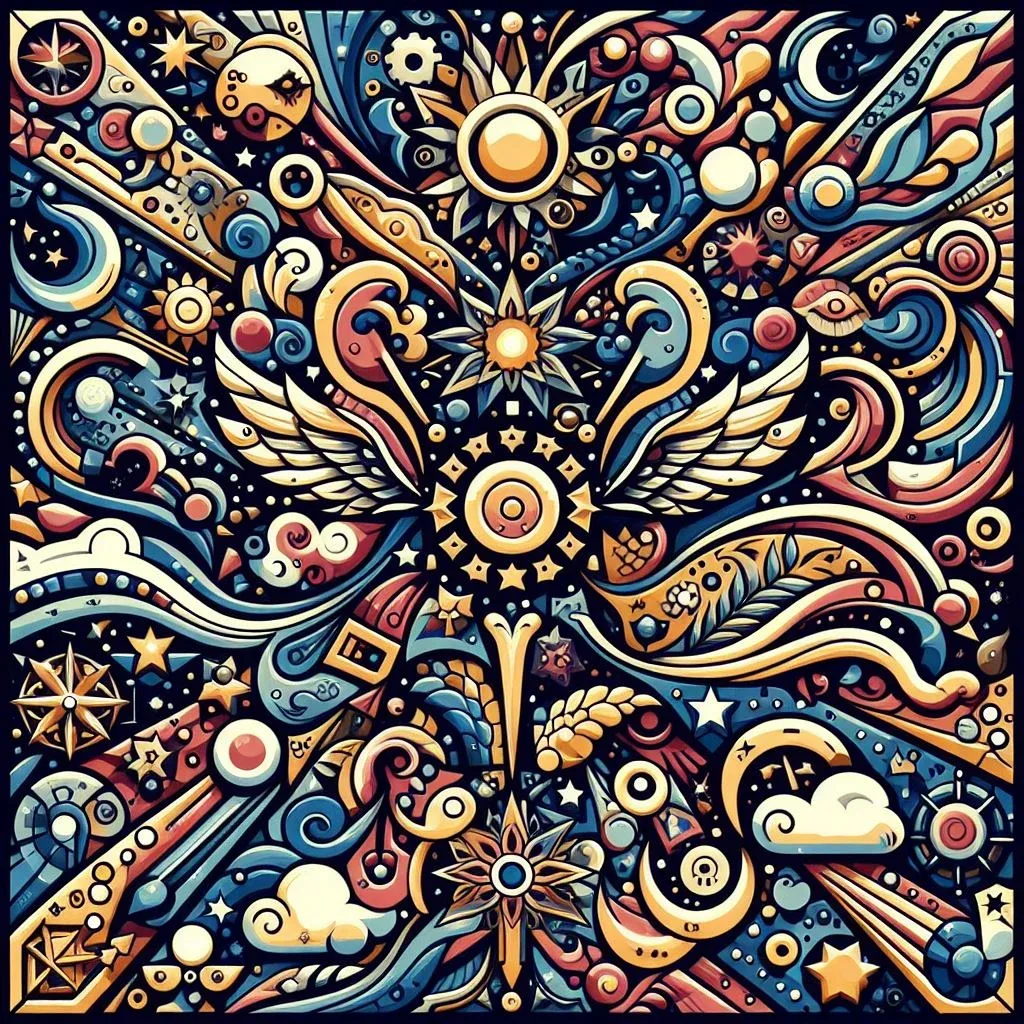
Therefore, the symbols of stoicism encourage us to face challenges with courage, to accept the things we cannot change, and to seek self-mastery in all situations. These symbols serve as constant reminders of Stoic values and principles, guiding us in the search for true happiness and personal fulfillment.
FAQ
What are the symbols of stoicism?
Symbols of Stoicism include the lotus flower, anchor, caduceus, owl, labyrinth, sun, ship, turtle, oyster, and bow.
What is the meaning of the lotus flower in Stoicism?
In Stoic philosophy, the lotus flower represents the ability to flourish and grow even in adverse conditions.
What does the anchor represent in Stoicism?
In Stoic philosophy, the anchor represents stability and the power to anchor the mind in rational and serene thoughts.
What is the significance of the caduceus in Stoicism?
In Stoic philosophy, the caduceus represents balance and harmony between the mental and emotional faculties.
What does the owl symbolize in stoicism?
In Stoic philosophy, the owl represents wisdom and a clear vision of reality.
What is the symbolism of the labyrinth in Stoicism?
In Stoic philosophy, the labyrinth symbolizes the search for virtue and wisdom.
What does the sun represent in stoicism?
In Stoic philosophy, the sun represents the light of reason and the transformative power of knowledge.
What is the meaning of the ship in Stoicism?
In Stoic philosophy, the ship symbolizes the journey of life and the need to adapt to changes and challenges.
What are other symbols of Stoicism?
In addition to the aforementioned symbols, other symbols associated with Stoicism include the turtle, oyster, and bow.
How to practice Stoic values in everyday life?
Stoic values can be practiced by seeking to live in accordance with nature, accepting what cannot be changed and cultivating virtue and inner serenity.
What is the influence of Stoicism on art and culture?
Stoicism has had a significant influence on art and culture, with many artists incorporating its principles and values into works that utilize the symbols of Stoicism.
Who are some famous people of Stoicism?
Some famous people of stoicism include Epictetus, a slave who became a leading representative, and Marcus Aurelius, a Roman emperor who followed Stoic principles.






